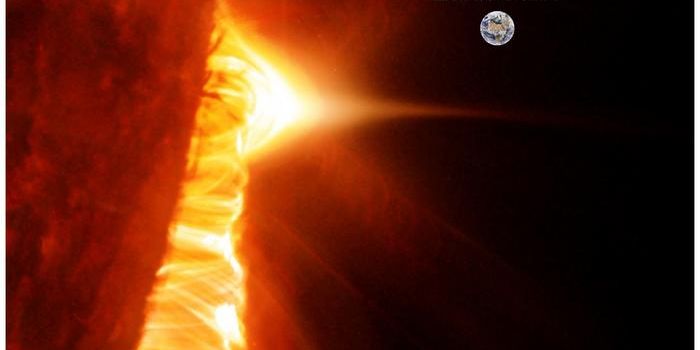Phobos Photobombs Images of Mars Taken by the Hubble Space Telescope
NASA’s Hubble Space Telescope does more than just observe the distant cosmos; it also peeks at the nearby objects in our solar system.
In a photo shoot involving Mars, Hubble Space Telescope grabbed 13 separate exposures that appear to have one of Mars’ moons (Phobos) swinging from around the back of the planet as it carries out its typical orbit.
Image Credit: NASA/Goddard Space Flight Center
Related: Why does Phobos have that giant crater?
All 13 of the exposures have been put together in a time lapse in NASA's new YouTube video below:
Phobos is nothing like the Earth’s Moon. Instead, at just 11-16 miles wide, Phobos is tiny and insignificant compared to Mars in the images. The Martian moon was originally discovered alongside Deimos (another moon orbiting the red planet) back in 1877 by American astronomer Asaph Hall.
Phobos completes an orbit in under eight hours, so over the 22-minute course of these exposures taken in May of 2016, it appeared to be moving very quickly.
A couple more things worth noting, Phobos is one of the smallest moons in the solar system, and it orbits more closely to its host planet than any other moon in our solar neighborhood does. Researchers believe this combination could spell out a recipe for disaster.
It all comes down to how Phobos could eventually be shredded apart by Mars’ gravitational forces. While it may not happen for another 20-70 million years, it could result in Mars gaining planetary rings, similar to those surrounding the larger gas planets further away in our solar system.
Phobos has tons of striations across its surface that suggest the moon is going through tidal stresses because of the gravitational unease. These were the first clue of Phobos’ inevitable fate.
Related: Where did these crater trails on Phobos' surface come from?
While researchers don’t know exactly where Phobos came from, its composition appears to be like that of asteroids. With that in mind, an asteroid belt wanderer may have been snagged by Mars’ gravity at one point or another, resulting in the moon we see today.
While it isn’t the first time we've spied Phobos, and it probably won’t be the last, it’s still cool to see these things from Hubble’s perspective.
Source: NASA









